Last updated: September 15, 2021
Article
Ecology of Lake Clark
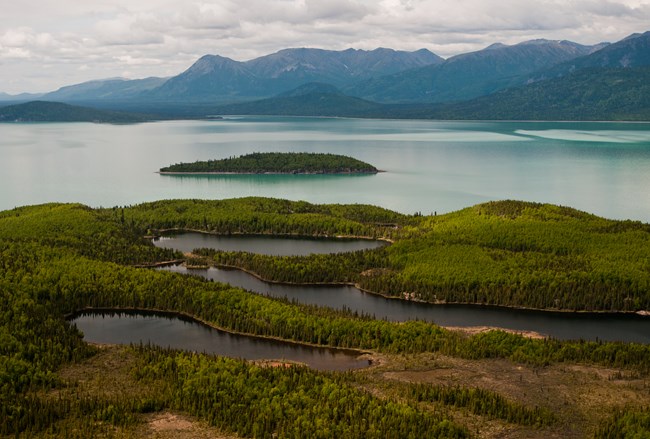
NPS Photo/K. Miller
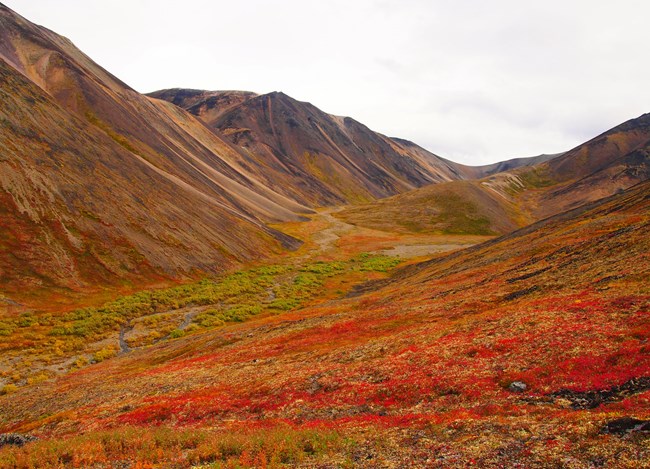
NPS Photo/E. Wilcox
Tundra: A Land of Extremes
Alpine tundra is found in the mountains of Lake Clark National Park at high elevations. Tundra is a low growing mat of lichens, mosses, and small plants, such as cranberries or blueberries. Tundra grows in places with cold temperatures and long winters. Caribou, ground squirrels and ptarmigan (a type of bird found in mountains and in northern regions) are some of the wildlife that call tundra home. Snow covers this landscape most of the year. Plants have less time to grow during this short and harsh growing season. Plants grow closer to the ground in dense, low-lying mats to conserve valuable heat and moisture in a place with dry, howling winds. Plants grow tiny leaves and flowers here. Due to these harsh conditions, tundra plant life becomes a world in miniature!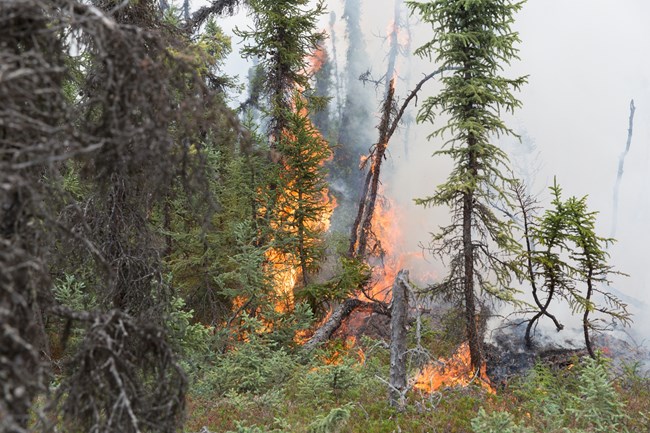
NPS Photo/Y. Matsui
Boreal Forest
Boreal forests have short cool summers and long cold winters. Common trees found in the boreal forest of Lake Clark are black spruce, white spruce, cottonwood, birch, aspen, willow, and alder. The ground within the boreal forest is a thick mat of mosses, lichens, sedges, grasses, and berries. Wildfire is common in the boreal forest. Wildfire can be dangerous to people but is natural in the boreal forest. Fire helps create patches of open areas in the forest for new plants to grow. Black spruce seeds even need fire to sprout. The forest is a patchwork of trees, shrubs, meadows, marshes, lakes, and braided rivers. Animals and plants in the boreal forest, such as lynx, red fox, and moose must survive long winters and short dry summers.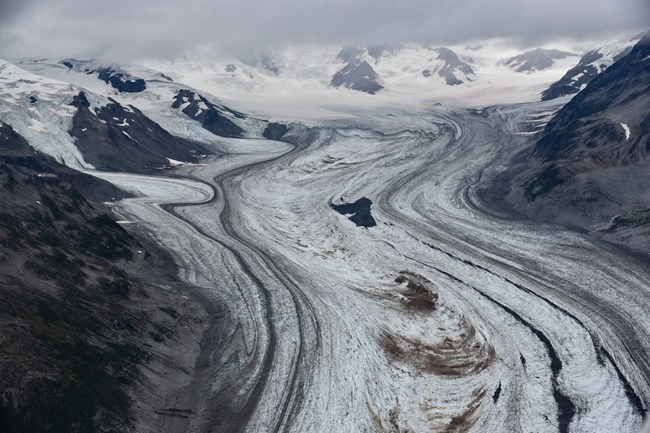
NPS Photo/K. Lewandowski
Freshwater Ecosystems
Glaciers
A glacier is a massive river of ice that flows slowly downhill. Glaciers form high in the mountains from snowpack that doesn't melt in the summer. Layers of snow build up over time and become heavy, eventually compressing into solid ice. This can take hundreds of years. Like bulldozers moving downhill, glaciers carve the park’s rugged terrain beneath them into wide U-shaped valleys. Glacier meltwater in the summer sends clean, cold water to lower elevations. This freshwater flows to the headwaters of the rivers and lakes where sockeye salmon hatch. Today, as the climate is warming, the glaciers in the park are melting and becoming smaller.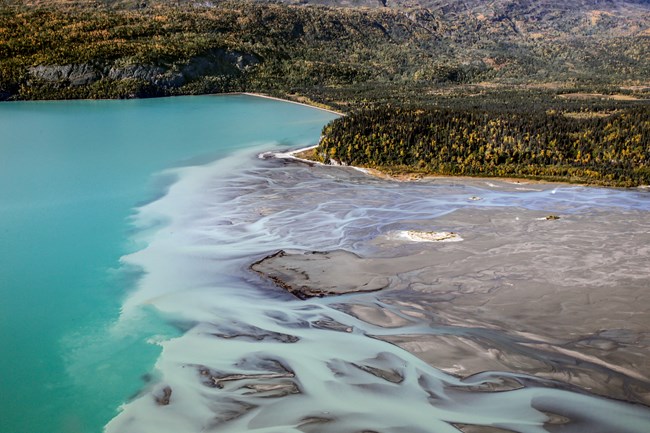
NPS Photo/T. Vaughn
Lakes and Rivers
Mazes of creeks, rivers and lakes cover the Lake Clark landscape. Look at a map of the park. How many lakes can you count? Lake Clark is the largest lake in the park. It is 41 miles long, ranging from 1 to 4 miles wide, and reaches a depth of 870 feet. Lakes carved by glaciers, such as Lake Clark, are long, narrow, deep and surrounded by mountains. Water flowing from the mountains into the lakes and rivers supports the world’s most productive sockeye salmon fishery. Each year salmon return to the waterways where they were born. The freshwater that provides the habitat to support salmon, supports people too. The Dena’ina people have lived in Lake Clark for thousands of years. The clean, cold freshwater and the salmon that return are part of the the reason people have lived here so long.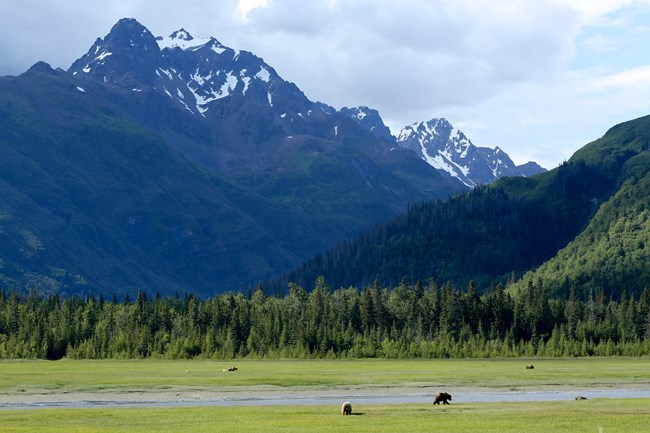
NPS Photo/J. Pfeiffenberger
Coastal Salt Marshes:
Vibrant and Lively
Salt marshes are located along the park’s coastline. The land meets the sea here as tides carry nutrients and saltwater to the land. Salt-tolerant plants, such as hardy sedges and grasses, grow in this mix of fresh and salt water. Fish, migratory birds, and mammals call this rare habitat home. We can think of a salt marsh as a biological supermarket. It absorbs nutrients from the ocean water and provides food for other animals. Dead plants break down in the water feeding insects and small fish. These smaller fish are then food for larger fish, birds, and mammals.
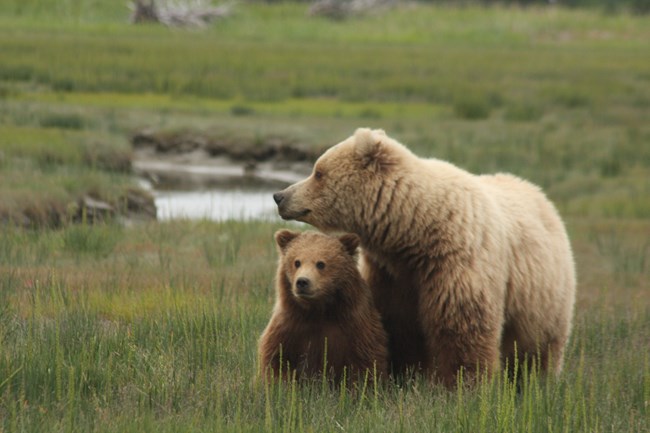
NPS Photo/K. Jalone
